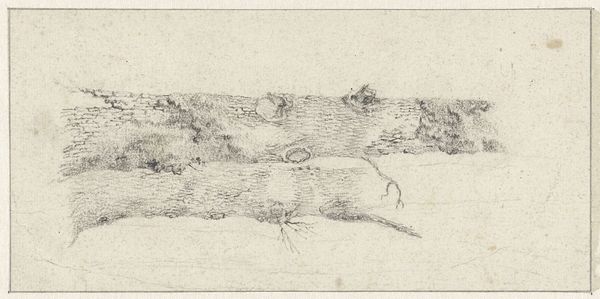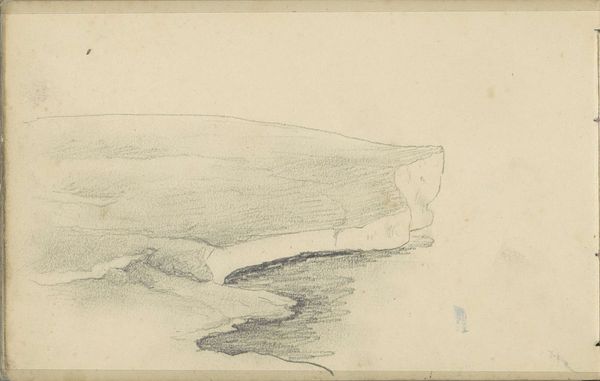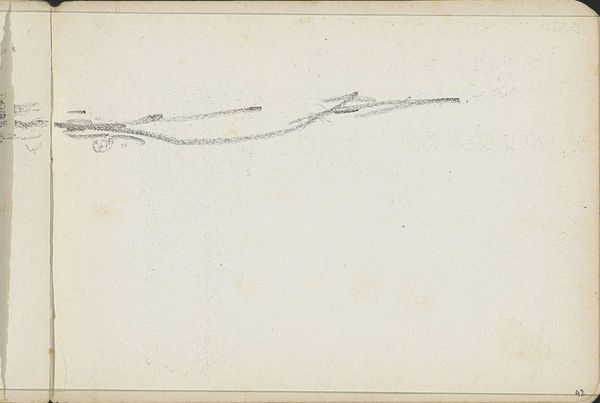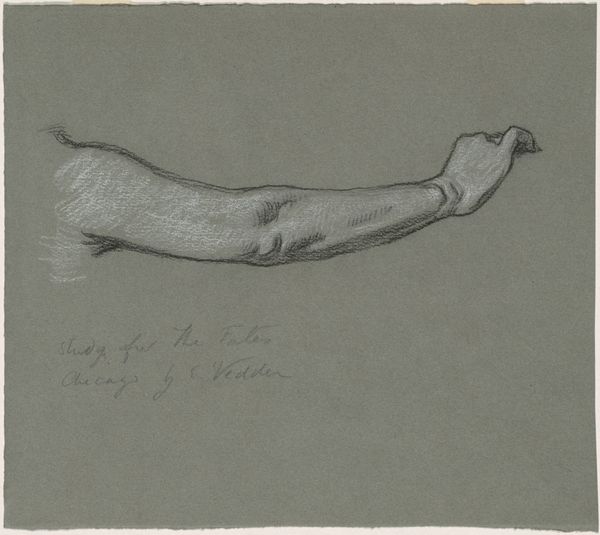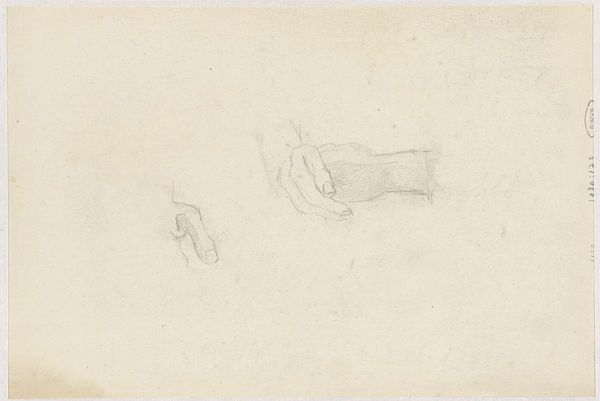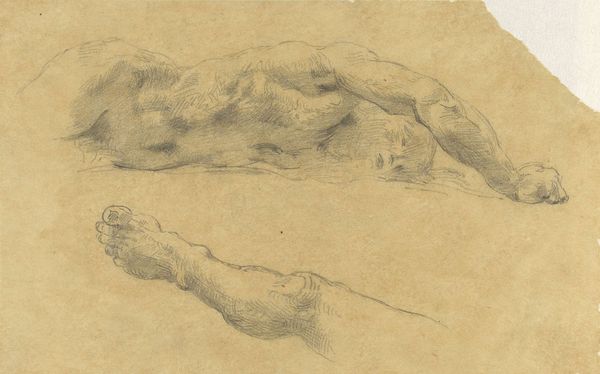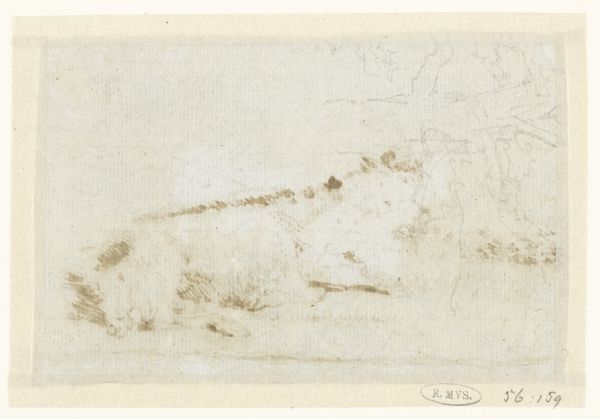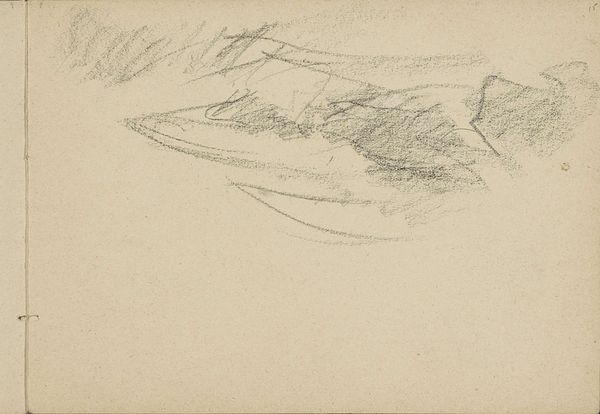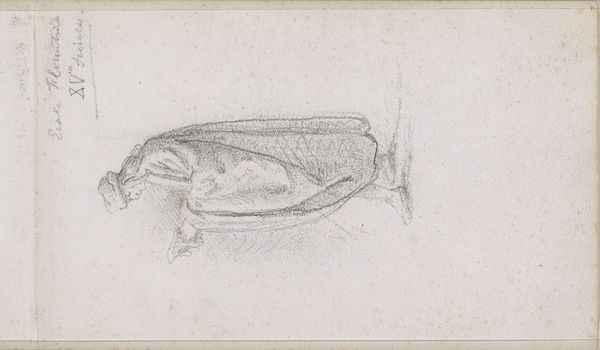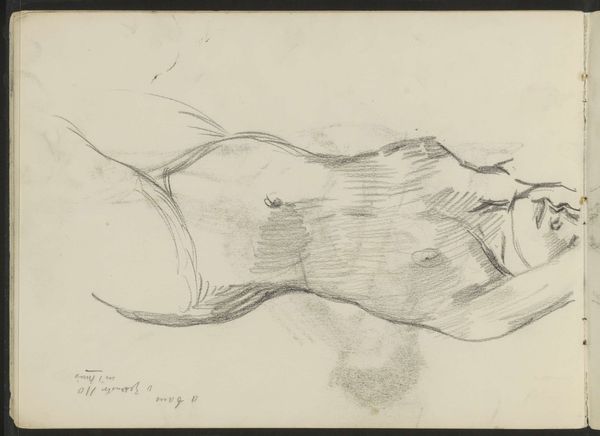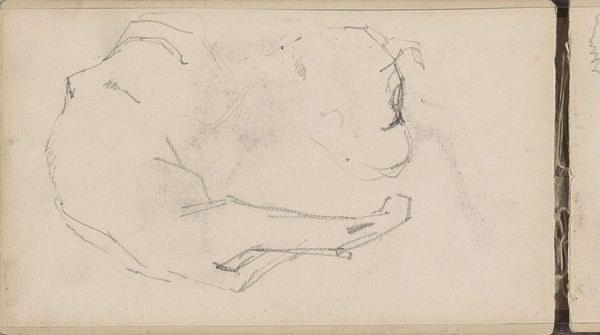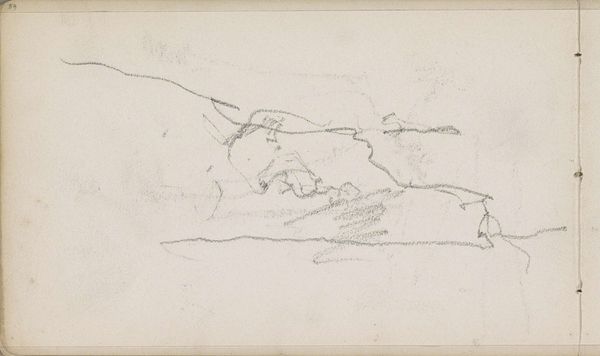
drawing, paper, pencil
#
drawing
#
pencil sketch
#
landscape
#
paper
#
pencil
Dimensions: height 132 mm, width 209 mm
Copyright: Rijks Museum: Open Domain
Curator: Here we have Willem Anthonie van Deventer's "Study of a Tree," likely created sometime between 1834 and 1893. It's a pencil drawing on paper. Editor: The immediate feeling I get is one of… transience. It feels fleeting, unfinished. The pencil strokes are so light, it’s almost like the tree is fading away. Curator: Interesting. Consider that the artist was working within a period highly influenced by the Industrial Revolution. This piece really resonates with a nostalgia for a simpler, more agrarian past, a common theme in art of the time. Editor: That certainly gives context to the style, I wonder if Deventer was consciously contrasting the mechanization of the era with the organic nature of the tree he’s depicting. The deliberate mark-making with the pencil, a readily available and relatively inexpensive tool, is intriguing too, pointing to accessibility in art creation and the democratization of the landscape. Curator: Absolutely. And even this ‘Study’ demonstrates a particular aesthetic choice for landscapes and their presentation. Notice how Deventer focuses on the formal aspects—shape, line, and texture rather than any particular narrative? Editor: The composition certainly draws attention to texture; the varying densities of pencil strokes give such tactile feeling to the rough bark and branches of that lone tree. Almost invites you to reach out and touch it, feel the age within those rings. Curator: You are focusing on the artistry while it also prompts questions about environmental changes during his era, maybe concerning deforestation and a disappearance of nature with his depiction, it urges reflection on our contemporary relationships with landscapes. Editor: Perhaps a critique on the shifting relationship to land! These simple materials open a complex space for us to consider human interaction, manipulation, or, in Deventer's hands, loving observation of our shared environments. It's just…well, a beautiful, delicate, and economical piece! Curator: Precisely. "Economical" not just in materials but expression, in the means by which the artist communicates such a sense of loss and connection. Editor: It makes you ponder what traces we will leave on our shared resources, how we engage with the matter around us… and perhaps find value in those transient, fragile relationships.
Comments
No comments
Be the first to comment and join the conversation on the ultimate creative platform.
